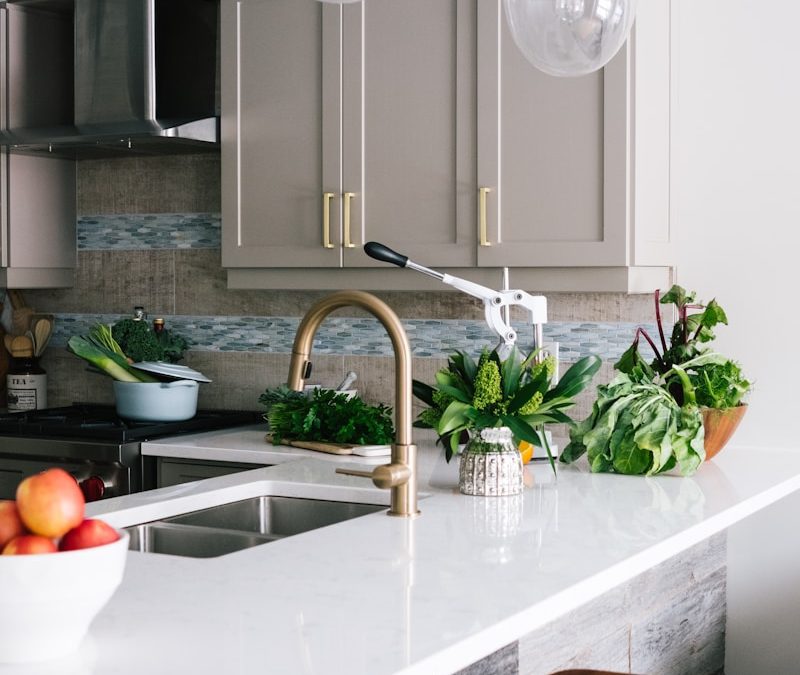Bringing the freshness of herbs into your kitchen can transform your cooking and brighten your space. A miniature herb garden is not only practical but also a beautiful addition to your home. In this comprehensive guide, we’ll explore how to create and care for your very own kitchen herb garden.
Contents
Choosing the Right Herbs
Selecting the right herbs is crucial for a successful indoor herb garden. Here are some popular choices:
Basil
Basil is a versatile herb commonly used in Italian cuisine. It’s perfect for making pesto, adding to salads, or flavoring pasta dishes. Basil thrives in warm environments with plenty of sunlight.
Thyme
Thyme is a hardy herb that complements a variety of dishes, including meats, stews, and soups. It’s known for its strong, earthy flavor and requires minimal care, making it ideal for beginners.
Mint
Mint is perfect for teas, desserts, and cocktails. It grows quickly and can be invasive, so it’s best kept in a separate container. Mint prefers a cool environment with indirect light.
Parsley
Parsley is a great garnish and can enhance the flavor of many dishes. It’s rich in vitamins and minerals. Parsley grows well in partial sunlight and requires regular watering.
Cilantro
Cilantro is essential for many cuisines, including Mexican and Indian. Its leaves and seeds (coriander) are both edible. Cilantro prefers cooler temperatures and can be tricky to grow, but it’s worth the effort for its fresh, citrusy flavor.
Setting Up Your Miniature Herb Garden
Container Selection
Choosing the right containers is vital for the health of your herbs. Look for pots with drainage holes to prevent waterlogging. Here are some container options:
- Ceramic Pots: These are aesthetically pleasing and come in various sizes and colors. Ensure they have drainage holes.
- Plastic Pots: Lightweight and affordable, plastic pots retain moisture well but can overheat if placed in direct sunlight.
- Metal Containers: Stylish and durable, metal containers are best used with a liner to prevent rust and overheating.
- DIY Options: Repurpose items like mason jars, tin cans, or wooden crates. Just make sure to add drainage holes.
Soil and Planting Tips
Using the right soil mix is crucial for herb growth. Opt for a high-quality, well-draining potting mix. Here’s how to plant your herbs:
- Fill Containers: Fill your pots with the potting mix, leaving about an inch from the top.
- Planting: Make a small hole in the soil, place the herb plant or seeds, and cover lightly with soil.
- Watering: Water the soil thoroughly but avoid overwatering. The soil should be moist but not soggy.
- Placement: Place the containers in a location that receives adequate sunlight, typically a south-facing window.
Light and Water Requirements
Lighting Solutions
Herbs need plenty of light to thrive. Here are some lighting tips:
- Natural Light: Place your herbs near a south-facing window where they can get 6-8 hours of sunlight daily.
- Grow Lights: If natural light is insufficient, use LED grow lights. Position them about 6-12 inches above the plants and use a timer to mimic natural light cycles.
Watering Techniques
Proper watering is essential for healthy herbs. Here are some tips:
- Frequency: Water when the top inch of soil feels dry. Most herbs prefer slightly moist soil.
- Method: Water at the base of the plant to avoid wetting the leaves, which can lead to fungal diseases.
- Consistency: Maintain a consistent watering schedule. Overwatering can cause root rot, while underwatering can stress the plants.
Maintenance and Harvesting
Pruning and Care
Regular maintenance will keep your herb garden healthy and productive. Here’s how to care for your herbs:
- Pruning: Regularly trim the herbs to encourage bushier growth. Remove any dead or yellowing leaves.
- Pest Control: Watch for pests like aphids or spider mites. Use natural insecticides or introduce beneficial insects like ladybugs.
- Fertilizing: Feed your herbs with a balanced, water-soluble fertilizer every 4-6 weeks.
Harvesting Techniques
Harvesting your herbs correctly ensures continuous growth. Follow these tips:
- Timing: Harvest in the morning when the oils in the leaves are most concentrated.
- Method: Use sharp scissors to cut the stems, leaving a few inches of growth. Avoid stripping the plant of all its leaves.
- Storage: Store fresh herbs in the refrigerator or dry them for later use. To dry herbs, tie the stems together and hang them upside down in a cool, dry place.
Creative Uses for Kitchen Herbs
Culinary Uses
Fresh herbs can elevate any dish. Here are some simple recipes and ideas:
- Herb-Infused Oils: Combine your favorite herbs with olive oil for a flavorful cooking oil.
- Herbal Teas: Brew fresh mint, thyme, or basil leaves for a refreshing tea.
- Herb Butter: Mix chopped herbs with softened butter for a delicious spread.
DIY Projects
Herbs are not only for cooking. Here are some DIY projects:
- Herb-Infused Vinegars: Add herbs to vinegar for a unique salad dressing.
- Bath Salts: Mix dried herbs with Epsom salts for a relaxing bath soak.
- Potpourri: Combine dried herbs with flowers and spices for a natural air freshener.
Conclusion
Creating and caring for a miniature herb garden in your kitchen is a rewarding and practical endeavor. With the right herbs, proper setup, and regular maintenance, you can enjoy fresh, flavorful herbs year-round. Whether you’re a seasoned gardener or a beginner, this guide will help you cultivate a thriving herb garden that enhances your culinary creations and brightens your home.
Discover the Secrets to Thriving Plants
Ultimate Guide to Plant Health
Unlock expert tips and proven methods to ensure your plants flourish year-round.

